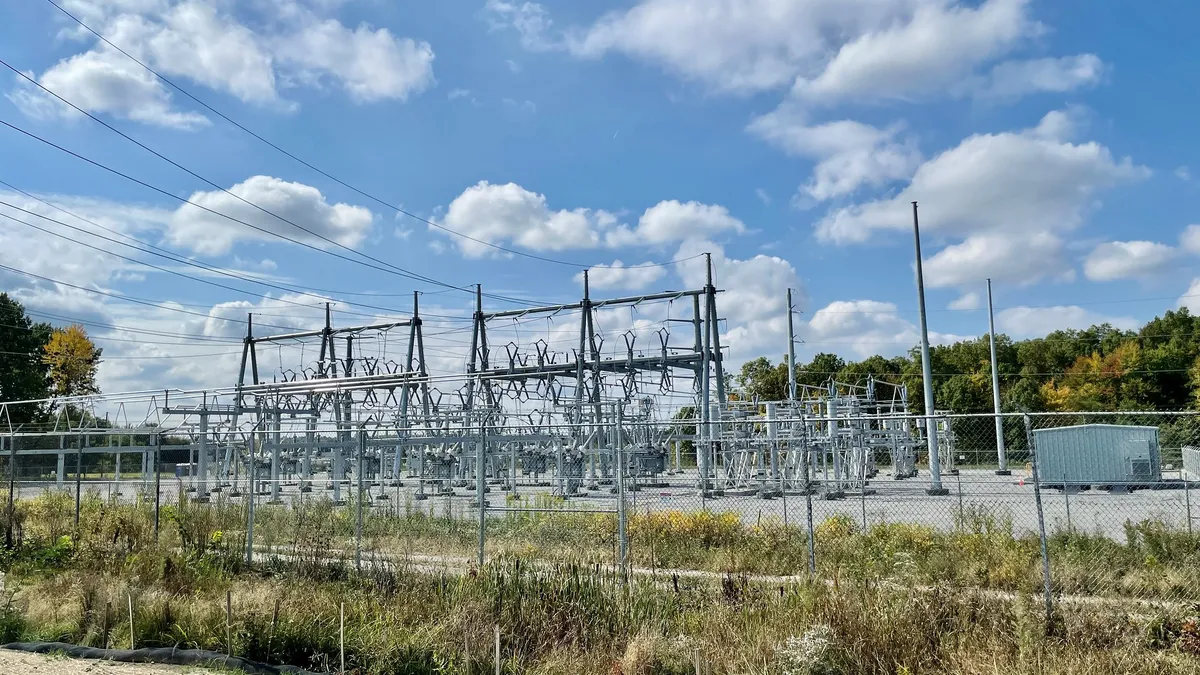Dive Brief:
-
The Federal Energy Regulatory Commission launched a hearing process on Friday to get more comments on a proposal by utilities participating in the PJM Interconnection that they be able to profit on transmission upgrades needed to bring new power facilities online.
-
FERC said it was unclear whether the utility proposal, filed by PPL, was "just and reasonable" so the agency asked for comments on various issues, including the utilities' argument that they face financial risks for making network upgrades without profiting from them.
-
The issue over whether a utility can invest in and profit from transmission upgrades is important because the return they can get on the investments drives up the overall costs of the projects, Rob Gramlich, Grid Strategies president, said Monday.
Dive Insight:
With a major transmission buildout looming, utilities have been looking for rule changes that would give them more opportunities to profit on the expansion.
In PJM's footprint, which spans 13 Mid-Atlantic and Midwest states, plus Washington, D.C., generators pay for network upgrades needed to safely connect their facilities to the grid. Transmission owners, like Exelon's utility subsidiaries, recover their costs for operating and maintaining the upgrades.
In June, PJM transmission owners, which mostly are utilities, filed a proposal that would give them the option of funding the upgrades themselves and earning a profit on those investments.
Amid a wave of renewable energy development, the scope of the upgrades is potentially massive.
It would cost almost $5 billion to make the required grid upgrades for the generating projects in PJM's interconnection queue, according to the utilities. Existing upgrade projects total about $1.5 billion, they noted.
The utilities contend that owning the upgraded facilities poses "significant" risks, including safety, cybersecurity and outage risks, but they aren't paid to cover those risks. The situation threatens their ability to attract capital, according to the utilities.
The proposal is opposed by PJM's independent market monitor, Monitoring Analytics, state utility regulators' group Organization of PJM States (OPSI), the American Clean Power Association, state ratepayer advocates and environmental groups.
In initial comments opposing the plan, OPSI said the proposal would shift risks and costs onto ratepayers and is anticompetitive and discriminatory. Also, the utilities' alleged risks are already covered by FERC-approved returns for their transmission assets, according to OPSI.
In its decision seeking more information about the plan, FERC asked for comments on a series of questions, including about the alleged risks the utilities face by not funding and earning a return on network upgrades.
FERC also asked the utilities to provide details supporting their claim that their inability to invest in network upgrades is making it harder for them to attract capital.
FERC gave parties 45 days to respond to the questions and then allotted another 45 days for reply comments.
In early September, FERC rejected a similar proposal and a related complaint from New York transmission owners, who wanted to be able to earn a return on their investment for interconnection upgrades (EL21-66; ER21-1647).
In the decision, FERC said the New York utilities failed to show that their inability to profit on third-party system upgrades exposes them to uncompensated risks.
The issue of who pays for transmission upgrades — the interconnecting customer or the utility — is "significant" given how a surge in proposed generating resources is driving up interconnection requests, Paul Patterson, a Glenrock Associates equity analyst, said in an email Monday.
"This proceeding highlights the complicated nature of electric power regulation in the United States and how something as seemingly mundane as the funding of transmission interconnections can generate so much controversy," Patterson said.
Correction: In a previous version of this article, PPL's role was misidentified. The company filed the proposal at FERC on behalf of other PJM utilities, but is not leading the effort.















